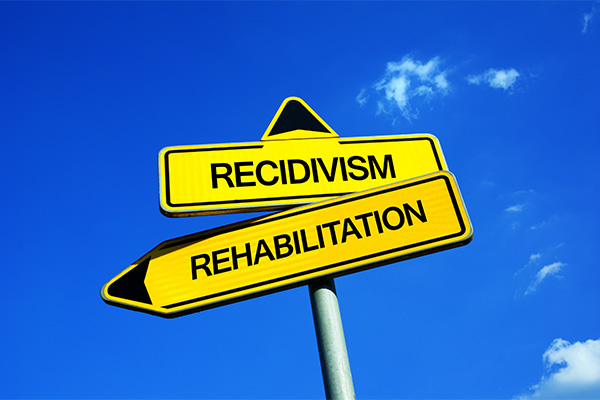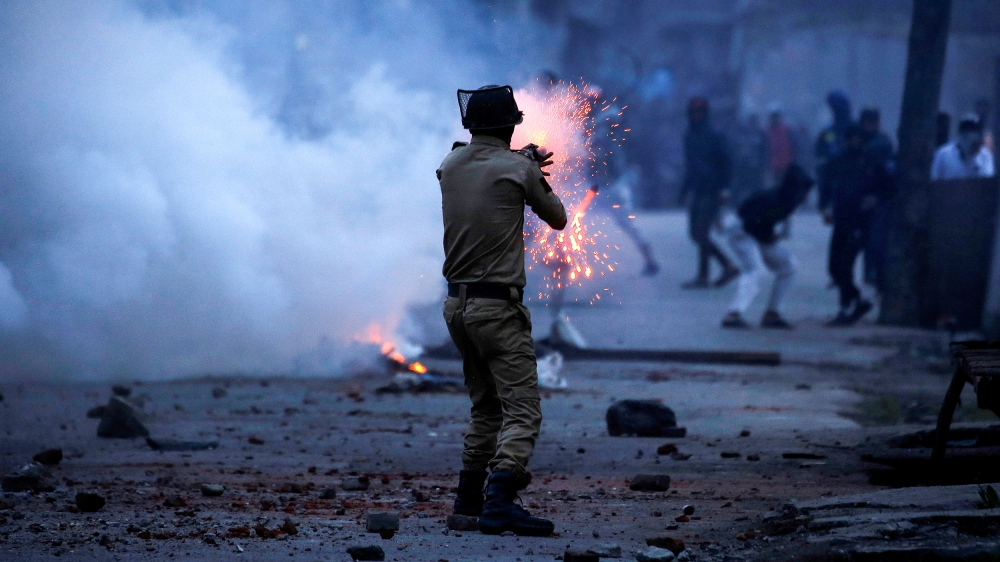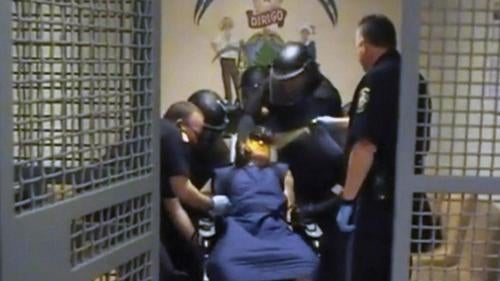Table of Contents
Solitary confinement, a practice that involves isolating prisoners in small cells for 22 to 24 hours a day, has been a subject of increasing scrutiny and debate in the United States. While it is often employed as a means of managing difficult inmates or ensuring prison safety, there is growing concern about its psychological and human rights implications. In this article, we will explore the use of solitary confinement in U.S. jails, its intended purposes, its impact on inmates, and the ongoing conversation surrounding its ethical and practical dimensions.
Solitary confinement, a correctional practice that entails isolating inmates in cramped cells for 22 to 24 hours a day, has come under mounting scrutiny and debate within the United States. Though it is frequently employed as a method to manage unruly or dangerous prisoners and to maintain prison safety, there is a growing and compelling concern regarding its psychological and human rights implications. In this article, we will embark on an exploration of the utilization of solitary confinement in U.S. jails, examining its original objectives, the profound effects it exerts on incarcerated individuals, and the ongoing discourse surrounding its ethical and practical dimensions.
**1. Original Intentions: Solitary confinement was initially conceived as a means to maintain prison discipline, protect inmates from harm, and prevent disruptive behavior. The idea was to isolate individuals from the general prison population to mitigate threats and prevent violence.
**2. Psychological Toll: However, as the use of solitary confinement has persisted, there is growing recognition of its devastating psychological effects. Prolonged isolation can lead to severe mental health issues, including depression, anxiety, hallucinations, and even suicidal tendencies. The extreme deprivation of human contact and sensory stimulation can have a profound and enduring impact on an individual’s mental well-being.
**3. Human Rights Concerns: Critics of solitary confinement argue that it amounts to cruel and inhumane treatment, violating international human rights standards. Many human rights organizations and legal experts contend that such conditions should be reserved for only the most extreme cases, and even then, only for the shortest duration necessary.
**4. Impact on Rehabilitation: Solitary confinement is also viewed as counterproductive to rehabilitation efforts. Instead of addressing the underlying causes of problematic behavior, it often exacerbates existing issues, making it more challenging for individuals to reintegrate into society upon release.
**5. Alternative Approaches: There is a growing movement towards alternatives to solitary confinement. Some correctional systems are exploring less punitive methods of managing disruptive inmates, such as specialized mental health units, behavior modification programs, and de-escalation techniques. These approaches aim to maintain safety while also addressing the underlying issues that contribute to inmate misconduct.
**6. Legal Reforms: Legal reforms have gained traction in various states, seeking to limit the use of solitary confinement, particularly for vulnerable populations like juveniles and individuals with mental illnesses. These reforms often impose strict criteria for the use of isolation and cap the duration of confinement.
**7. Transparency and Oversight: Improved transparency and external oversight of solitary confinement practices have become focal points of advocacy. Ensuring that the conditions of confinement are monitored and conform to established guidelines is seen as a critical safeguard against potential abuses.
In conclusion, the practice of solitary confinement in U.S. jails stands at a crossroads, with a growing acknowledgment of its human toll and the need for substantial reform. While it was originally conceived as a tool for maintaining order and security, its impact on inmates’ mental health, human rights concerns, and questions about its efficacy in rehabilitation have ignited a robust conversation about its ethical and practical dimensions. As this discourse continues, there is hope for the development of more humane and effective approaches to managing difficult inmates and ensuring the safety and well-being of both incarcerated individuals and the broader society.
Should you desire more in-depth information, it’s available for your perusal on this page: The Effect of Solitary Confinement on Institutional Misconduct: A …
Discipline and Security
Solitary confinement is frequently used as a disciplinary measure for prisoners who have violated rules or are deemed a threat to themselves or others. It is intended to deter disruptive behavior and maintain order within correctional facilities.
Solitary confinement is frequently used as a disciplinary measure for prisoners who have violated rules or are deemed a threat to themselves or others. It is intended to deter disruptive behavior and maintain order within correctional facilities. However, the use of solitary confinement is a highly contentious practice with significant ethical and psychological concerns. To address these issues and promote a more humane and effective approach to managing inmate behavior, it is crucial to consider alternative disciplinary methods and improvements to the existing system. Here are some extended ideas on this topic:
Psychological Impact: Solitary confinement can have severe psychological effects, including anxiety, depression, hallucinations, and even suicidal tendencies. To address this, correctional facilities should prioritize mental health assessments and interventions for individuals placed in isolation. Specialized mental health professionals should be involved in determining the suitability and duration of solitary confinement.
Time Limits: Implement clear and reasonable time limits for solitary confinement. Prolonged isolation can exacerbate mental health issues and is often considered inhumane. Establishing maximum durations for isolation, as recommended by international human rights standards, can prevent excessive use.
Alternatives to Solitary Confinement: Explore and implement alternative disciplinary measures that focus on rehabilitation and behavior modification rather than punitive isolation. These alternatives could include therapeutic interventions, educational programs, and conflict resolution strategies.
Transparency and Oversight: Establish independent oversight bodies to review and monitor the use of solitary confinement. Transparency in the decision-making process and conditions of confinement is essential to prevent abuse and ensure accountability.
Segregation for Safety: Differentiate between solitary confinement for disciplinary purposes and segregation for safety concerns. While both involve isolation, the latter should primarily focus on separating individuals who pose a genuine threat to others, rather than being used as a disciplinary tool.
Training for Staff: Provide comprehensive training to correctional staff on the psychological and human rights implications of solitary confinement. Equipping staff with the knowledge and skills to manage difficult situations without resorting to isolation can lead to more effective and humane outcomes.
Reintegration Programs: Develop reintegration programs to prepare individuals in solitary confinement for a successful return to the general prison population or society upon release. This can include social and life skills training, as well as counseling to address any trauma from isolation.
Research and Evaluation: Conduct ongoing research and evaluation of the impact of solitary confinement on inmates and staff. Gathering data on the outcomes and effectiveness of disciplinary measures can inform evidence-based practices.
International Standards: Align correctional practices with international standards and guidelines, such as the Mandela Rules, which provide a framework for the treatment of prisoners and emphasize the importance of humane and dignified conditions of confinement.
Legislative Reform: Advocate for legislative reforms that restrict the use of solitary confinement, especially for vulnerable populations, such as juveniles, individuals with mental illnesses, and pregnant women. Some jurisdictions have already taken steps to limit or ban its use in such cases.
By adopting these extended ideas, correctional facilities can move towards a more balanced and compassionate approach to discipline that not only maintains order but also prioritizes the mental and emotional well-being of inmates. Ultimately, this approach can contribute to safer and more rehabilitative environments within the criminal justice system.
If you’d like to dive deeper into this subject, there’s more to discover on this page: An Examination of the Influence of Exposure to Disciplinary …

Protective Custody
In some cases, inmates are placed in solitary confinement for their protection. This includes vulnerable individuals, such as witnesses or informants, who may face harm from other prisoners.
nullLooking for more insights? You’ll find them right here in our extended coverage: the-impacts-of-solitary-confinement.pdf

Administrative Segregation
Some inmates are placed in solitary confinement while awaiting disciplinary hearings or investigations, as a precautionary measure to separate them from the general population.
Solitary confinement, often referred to as “the hole” or “segregation,” is a practice within the prison system that merits careful consideration due to its significant impact on inmates’ mental and physical well-being. While it is used as a precautionary measure to separate certain inmates from the general population or during disciplinary investigations, there are serious concerns regarding its ethical implications, human rights violations, and potential for harm.
Isolation’s Impact on Mental Health: Extended periods of isolation can have profound and detrimental effects on an inmate’s mental health. The lack of social interaction, sensory deprivation, and the feeling of being cut off from the world can lead to anxiety, depression, hallucinations, and even suicidal thoughts. In some cases, inmates may leave solitary confinement with severe psychological trauma.
Potential for Abuse: Solitary confinement can be abused by correctional staff, leading to human rights violations and abuses of power. There have been numerous cases of inmates being placed in isolation for extended periods without proper justification or oversight.
Alternatives to Solitary Confinement: Many experts and advocacy groups argue for the implementation of alternative disciplinary measures and security protocols that do not involve solitary confinement. These alternatives include step-down programs, behavioral interventions, and enhanced staff training to manage difficult inmates without resorting to isolation.
Legal and Ethical Concerns: Solitary confinement has faced legal challenges in various jurisdictions due to concerns about its constitutionality and ethical implications. Courts have often weighed in on the appropriateness and duration of solitary confinement, leading to reforms in some cases.
Rehabilitation vs. Punishment: The practice of solitary confinement raises questions about the purpose of incarceration. Is it primarily for punishment, rehabilitation, or both? Advocates for prison reform argue that solitary confinement is more punitive than rehabilitative and may hinder an inmate’s ability to reintegrate into society.
Impact on Recidivism: There is evidence to suggest that the use of solitary confinement can increase the risk of recidivism. Inmates subjected to isolation may leave prison with worsened mental health issues and a heightened likelihood of reoffending.
International Standards: Many international human rights organizations, such as the United Nations, have expressed concerns about the use of solitary confinement. Some countries have adopted more restrictive policies regarding its use in alignment with international standards.
Transparency and Oversight: Ensuring transparency and independent oversight of solitary confinement practices is essential to safeguard against abuse and protect the rights of inmates. Regular monitoring and reporting can help identify instances of overuse or misuse.
In conclusion, while solitary confinement is sometimes utilized as a precautionary measure or disciplinary tool within the prison system, it is a practice that demands careful scrutiny and reform. Concerns about its impact on inmates’ mental health, the potential for abuse, and its effectiveness in achieving correctional goals underscore the need for a thoughtful reevaluation of its use. Balancing the need for security with respect for human rights and the goal of rehabilitation should be at the forefront of any discussions surrounding solitary confinement within the criminal justice system.
For additional details, consider exploring the related content available here Restrictive Housing in the U.S.: Issues, Challenges, and Future …

Psychological Effects
Prolonged periods of isolation can have severe psychological consequences, including anxiety, depression, hallucinations, and even suicidal tendencies. The absence of social interaction and sensory stimulation can take a heavy toll on mental well-being.
Prolonged periods of isolation within correctional settings constitute a deeply concerning issue, with profound psychological consequences that demand attention and reform. The detrimental effects of such isolation extend far beyond the physical confines of a prison cell, impacting the mental well-being of incarcerated individuals in alarming ways.
1. Anxiety and Paranoia: Isolation can trigger intense anxiety and paranoia among inmates. With limited human interaction and the constant feeling of being watched, individuals may develop heightened vigilance and fear, making it challenging to relax or trust others.
2. Depression and Despair: The sense of hopelessness that accompanies prolonged isolation often leads to depression. Inmates may grapple with overwhelming feelings of sadness, loneliness, and despair, which can have long-lasting effects on their mental health.
3. Hallucinations and Delusions: Isolation can give rise to hallucinations and delusions, where individuals perceive things that aren’t real or become detached from reality. This heightened vulnerability to psychosis is a harrowing consequence of extreme social deprivation.
4. Suicidal Tendencies: Perhaps one of the most dire outcomes of prolonged isolation is the heightened risk of suicidal tendencies. The overwhelming sense of despair and the absence of social support can push individuals to contemplate or attempt self-harm or suicide as a means of escape from their suffering.
5. Deterioration of Coping Mechanisms: Isolation deprives individuals of the opportunity to use healthy coping mechanisms to deal with stress and emotional challenges. Instead, they may resort to harmful behaviors or self-destructive habits to manage their emotional pain.
6. Social Skills Erosion: Extended isolation erodes social skills and interpersonal abilities, making it difficult for individuals to reintegrate into society upon release. The loss of basic communication skills can further hinder their rehabilitation.
7. Long-Term Trauma: Even after release, the psychological trauma inflicted by prolonged isolation can persist. Formerly incarcerated individuals may struggle with post-traumatic stress disorder (PTSD) or other mental health issues that impede their ability to lead healthy and productive lives.
8. Human Rights Concerns: The United Nations and various human rights organizations have recognized the severe psychological impact of prolonged isolation, and they advocate for reforms to limit its use as a punitive measure.
9. The Need for Alternatives: Addressing the mental health consequences of prolonged isolation underscores the urgent need for alternatives to punitive segregation. Restorative justice, counseling, therapy, and structured rehabilitative programs should be prioritized as more humane and effective approaches to addressing misconduct within correctional facilities.
In conclusion, the psychological consequences of prolonged isolation in correctional settings are deeply troubling. They encompass anxiety, depression, hallucinations, suicidal tendencies, and long-term trauma. Recognizing these effects underscores the urgency of reforming punitive practices within the criminal justice system and prioritizing rehabilitation, mental health support, and alternatives to solitary confinement. By doing so, society can better address the well-being of incarcerated individuals and work towards a more humane and effective approach to incarceration that respects human dignity and fosters rehabilitation.
Don’t stop here; you can continue your exploration by following this link for more details: The Psychological Impact of Incarceration: Implications for Post …

Physical Health
Isolated inmates often experience physical health issues, such as sleep disturbances, weakened immune systems, and increased risk of chronic diseases due to limited physical activity.
The detrimental effects of isolation on inmates’ physical health cannot be underestimated. Isolated inmates, whether in solitary confinement or other forms of extreme segregation, face a unique set of challenges that can have severe consequences for their physical well-being. These challenges, ranging from sleep disturbances to increased risk of chronic diseases, underscore the urgent need for reevaluating and reforming isolation practices within the correctional system.
One of the most immediate and noticeable effects of isolation is sleep disturbances. Inmates in isolation often struggle to maintain regular sleep patterns, leading to chronic sleep deprivation. This can result in a range of health issues, including impaired cognitive function, mood disorders, and weakened immune systems. Sleep is crucial for the body’s ability to repair and regenerate, and the absence of quality sleep can have long-term repercussions on an inmate’s overall health.
Isolated inmates also tend to have limited opportunities for physical activity. The lack of movement and exercise can lead to muscle atrophy, decreased cardiovascular fitness, and weight gain. Prolonged inactivity contributes to a higher risk of chronic diseases, such as diabetes and heart disease, which can have severe consequences for an individual’s long-term health and well-being.
Moreover, the psychological stress associated with isolation can further exacerbate physical health issues. Chronic stress can lead to the release of stress hormones, which, when persistent, can weaken the immune system and increase susceptibility to illnesses. This, coupled with the suboptimal living conditions often associated with isolation units, creates a perfect storm for the deterioration of an inmate’s physical health.
Recognizing these health risks, some correctional systems are reevaluating their use of isolation and exploring alternative approaches that prioritize the well-being of inmates. These alternatives may include enhanced mental health support, structured out-of-cell time, and the development of therapeutic programs designed to address the needs of isolated individuals without resorting to extreme segregation.
In conclusion, the physical health issues faced by isolated inmates underscore the urgent need for reform in correctional practices. Isolation can lead to sleep disturbances, weakened immune systems, and an increased risk of chronic diseases due to limited physical activity. Acknowledging these risks and adopting more humane and rehabilitative approaches to confinement is essential for promoting the well-being and long-term health of incarcerated individuals.
If you’d like to dive deeper into this subject, there’s more to discover on this page: The body in isolation: The physical health impacts of incarceration in …

Rehabilitation Challenges
Solitary confinement can hinder an inmate’s ability to participate in rehabilitation programs, making it difficult for them to reintegrate into society upon release.
nullDon’t stop here; you can continue your exploration by following this link for more details: The body in isolation: The physical health impacts of incarceration in …

Recidivism
Some argue that the harsh conditions of solitary confinement can contribute to higher rates of recidivism as inmates struggle to adapt to life outside of isolation.
Some argue that the harsh conditions of solitary confinement can contribute to higher rates of recidivism as inmates struggle to adapt to life outside of isolation. This viewpoint underscores several critical concerns about the long-term consequences of subjecting individuals to prolonged periods of extreme social and sensory deprivation:
Psychological Effects: Solitary confinement is known to have severe psychological effects, such as increased anxiety, depression, and hallucinations. Inmates who endure these conditions may carry these mental health burdens with them upon release, hindering their ability to reintegrate into society effectively.
Lack of Socialization: Extended isolation denies inmates the opportunity to develop essential social skills and maintain healthy social relationships. Without these skills, former inmates may struggle to connect with others, find employment, or establish a stable support network, making reentry into society more challenging.
Reactive Behavior: Some individuals subjected to solitary confinement may develop reactive behaviors as a coping mechanism. These behaviors, such as aggression or withdrawal, can become ingrained and pose a significant obstacle to successful reintegration.
Impaired Decision-Making: The prolonged sensory deprivation experienced in solitary confinement can impair an individual’s ability to make sound decisions. This can lead to poor judgment, difficulty adhering to societal norms, and a higher likelihood of engaging in criminal activities after release.
Reduced Access to Rehabilitation: Inmates in solitary confinement often have limited access to educational and rehabilitative programs. This lack of opportunity for personal growth can hinder their capacity to develop new skills or perspectives that would support a law-abiding life upon release.
Physical Health Decline: The adverse physical health effects of solitary confinement, including sleep disturbances and reduced physical activity, can exacerbate existing health issues or lead to new ones. Poor physical health can impede an individual’s ability to find employment or pursue a stable and healthy lifestyle post-incarceration.
Increased Risk of Recidivism: All these factors, combined with the stigma attached to solitary confinement, can create a perfect storm that increases the risk of recidivism. Inmates released from solitary confinement may struggle to find employment, housing, or emotional stability, increasing the likelihood of returning to criminal activities.
Reforming Solitary Practices: Recognizing these concerns, there is a growing movement to reform solitary confinement practices within the criminal justice system. Some jurisdictions are limiting its use, especially for vulnerable populations like juveniles and individuals with mental health issues, in an effort to reduce the long-lasting negative impacts on inmates.
In conclusion, the debate over the use of solitary confinement is not only about immediate safety and security within correctional facilities but also about the long-term consequences for individuals and society as a whole. Striking a balance between security concerns and the humane treatment of inmates is essential to address the potential contribution of harsh solitary conditions to higher rates of recidivism.
Don’t stop here; you can continue your exploration by following this link for more details: Solitary Confinement in US Prisons

Human Rights Concerns
Critics argue that solitary confinement constitutes cruel and unusual punishment, violating inmates’ Eighth Amendment rights. International bodies, including the United Nations, have called for its limited use.
The debate surrounding solitary confinement is not merely a matter of policy; it strikes at the core of human rights and ethical considerations within the realm of criminal justice. Critics, including legal scholars, human rights advocates, and mental health professionals, assert that the practice of solitary confinement amounts to cruel and unusual punishment, a violation of inmates’ Eighth Amendment rights under the United States Constitution.
1. Psychological Toll: One of the primary arguments against solitary confinement revolves around its severe psychological toll. Prolonged isolation, often without meaningful human interaction or mental stimulation, can lead to profound and lasting psychological harm. Inmates in solitary confinement may experience depression, anxiety, hallucinations, and even suicidal tendencies. This raises significant ethical questions about the impact of punitive measures on an individual’s mental health.
2. Lack of Rehabilitation: Critics contend that solitary confinement hinders rehabilitation efforts. Instead of addressing the underlying causes of an inmate’s behavior, it isolates and exacerbates mental health issues, potentially reinforcing a cycle of criminality. Rehabilitation, a fundamental objective of the justice system, becomes unattainable in such conditions.
3. Disproportionate Impact: There are concerns about the disproportionate impact of solitary confinement on vulnerable populations, including juveniles, individuals with mental illnesses, and those with cognitive impairments. Placing such individuals in isolation is viewed as particularly cruel and inhumane, given their reduced capacity to cope with the psychological distress it entails.
4. International Condemnation: The condemnation of solitary confinement is not limited to national critics. International bodies, including the United Nations, have expressed grave concerns and called for its limited use. Such condemnation reflects a global consensus on the inhumanity of the practice.
5. Alternatives to Solitary Confinement: Critics argue that there are more effective and humane alternatives to solitary confinement. These alternatives focus on behavioral management, mental health support, and de-escalation strategies rather than punitive isolation. These approaches are not only more ethical but also have the potential to create safer and more rehabilitative correctional environments.
6. Legal Challenges: Solitary confinement has faced numerous legal challenges in the United States. Courts have grappled with cases where inmates argue that their Eighth Amendment rights were violated. These legal battles have underscored the need for a reevaluation of the practice.
7. Evolving Views: The debate over solitary confinement reflects evolving societal views on punishment and rehabilitation. As the understanding of the psychological and ethical dimensions of incarceration grows, there is a growing consensus that solitary confinement is incompatible with modern principles of justice.
In conclusion, the controversy surrounding solitary confinement represents a pivotal moment in the evolution of criminal justice practices. Critics argue that its use not only constitutes cruel and unusual punishment but also undermines the principles of rehabilitation and human dignity. The global consensus against its use, coupled with legal challenges and a deeper understanding of its psychological impact, signifies a pressing need for reform in how we approach punitive measures within the correctional system. It prompts us to ask fundamental questions about the values and ethics that should guide our treatment of those within the criminal justice system, ultimately seeking a more just and humane approach to incarceration.
Don’t stop here; you can continue your exploration by following this link for more details: Solitary Confinement in New Hampshire

Alternatives to Solitary
Advocates for criminal justice reform emphasize the need for alternatives to solitary confinement, such as enhanced mental health services, de-escalation training for staff, and better conflict resolution strategies.
Advocates for criminal justice reform are resolute in their call for alternatives to solitary confinement, recognizing the significant physical and psychological toll it can take on inmates. To address the complex challenges associated with the use of solitary confinement, a multifaceted approach that prioritizes the well-being of incarcerated individuals and public safety is essential. Here are some key strategies and alternatives that reform advocates are championing:
Enhanced Mental Health Services: It is widely acknowledged that a substantial portion of individuals in solitary confinement grapple with mental health issues. Reform advocates argue for increased access to mental health services within correctional facilities. This includes not only timely assessment and treatment but also ongoing support for inmates with mental health disorders. Diverting individuals away from solitary and into mental health treatment programs can be a more humane and effective approach.
De-Escalation Training for Staff: Training correctional staff in de-escalation techniques is crucial to reducing the use of solitary confinement. By providing staff with the skills to defuse tense situations and manage challenging behaviors without resorting to isolation, it becomes possible to maintain safety while avoiding the harm associated with solitary confinement.
Better Conflict Resolution Strategies: Developing effective conflict resolution strategies within correctional facilities is paramount. Inmates often experience conflicts with one another or with staff, which can escalate and lead to isolation. Implementing restorative justice practices and conflict resolution programs can help inmates resolve disputes peacefully and learn to take responsibility for their actions.
Limiting the Duration of Confinement: Advocates emphasize the need for strict limits on the duration of solitary confinement. Prolonged isolation is particularly harmful, and establishing clear guidelines for the maximum length of time an inmate can spend in solitary is a critical step in mitigating its adverse effects.
Use of Step-Down Programs: Graduated or step-down programs are seen as viable alternatives to abrupt release from solitary. These programs allow inmates to transition gradually from isolation to general population, with increased privileges and social interaction as they progress. This approach reduces the risk of psychological harm associated with sudden reintegration.
Increased Transparency and Oversight: Advocates stress the importance of transparency and external oversight of solitary confinement practices. Regular monitoring and reporting on the use of solitary, as well as involvement from independent oversight bodies, can help hold correctional facilities accountable for their actions and ensure that solitary is used sparingly and as a last resort.
Research and Evaluation: Robust research and evaluation of the impact of solitary confinement on inmates’ mental health and overall well-being are essential. This data can inform evidence-based policies and practices that prioritize rehabilitation and public safety over punitive measures.
Community-Based Alternatives: Whenever possible, diversion from the criminal justice system altogether is considered a preferable option. Advocates promote community-based alternatives to incarceration, such as rehabilitation programs, probation, and supervised release, which can address underlying issues and prevent the need for solitary confinement.
In conclusion, advocates for criminal justice reform are championing alternatives to solitary confinement that prioritize the physical and mental well-being of inmates, as well as the safety of correctional facilities. By focusing on mental health services, staff training, conflict resolution, and increased transparency, these efforts aim to reduce the reliance on solitary confinement and promote a more humane and effective approach to managing inmate behavior within the criminal justice system.
Explore this link for a more extensive examination of the topic: Examining the Neighborhood Context of the Violent Offending …

Transparency and Oversight
Calls for greater transparency and oversight in the use of solitary confinement have led to policy changes in some jurisdictions, ensuring that inmates’ rights are protected.
nullExplore this link for a more extensive examination of the topic: Executive Order on Advancing Effective, Accountable Policing and …

Solitary confinement remains a controversial and polarizing practice within the U.S. criminal justice system. While it is intended to address issues of discipline and security, its use has raised significant ethical concerns and has been linked to severe psychological and physical effects on inmates. As the conversation surrounding solitary confinement continues, there is a growing push for reform and a reevaluation of its place in modern corrections.
Efforts to reduce the use of solitary confinement, implement alternatives, and improve conditions for isolated inmates are ongoing. Balancing the need for prison safety with the imperative of respecting human rights and ensuring the well-being of incarcerated individuals remains a complex challenge that requires thoughtful consideration and policy reform.
For additional details, consider exploring the related content available here 6 The Experience of Imprisonment | The Growth of Incarceration in …
More links
Should you desire more in-depth information, it’s available for your perusal on this page: The body in isolation: The physical health impacts of incarceration in …
